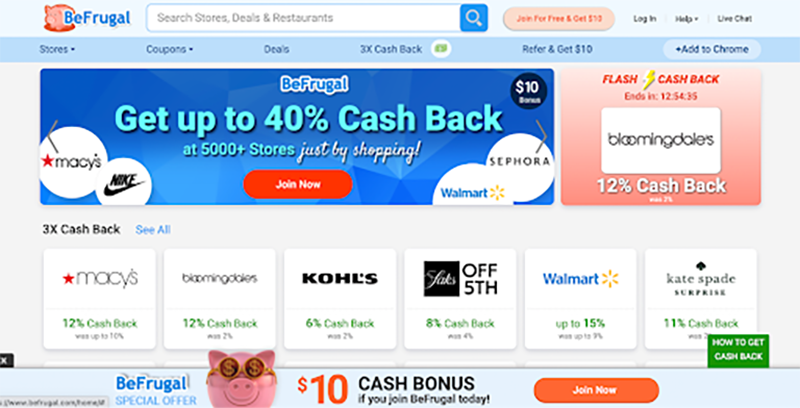
Insights from Consumers Who Like Ads
Those of us who’ve been in the industry for 20-plus years remember when ad clutter was a significant issue with programmatic. Back then, ad networks and open exchanges maintained media quality teams who were tasked with eyeballing sites that wanted to do business with them.
What Goes Around Comes Around
I remember speaking to one such media quality team member who told me that a human reviews every site in their network to count the number of ad placements. If there were too many ad placements the publisher was barred from selling its inventory through her company’s exchange. This was a key selling point.
And it wasn’t a one-and-done exercise. Her team spot-checked sites even after they had been approved. This was an imperative exercise as sites with ad clutter were widely viewed as inferior, and the ad exchange didn’t want to get a reputation for low-quality inventory.
Then in 2007, Paris-based Alenty, one of the industry’s first ad-visibility platforms, introduced the concept of viewability. By the mid-2010s, new viewability reports, such as RealVu and Google’s Active View for Google Ads hit the market, and advertisers began to advocate for a way to determine if their ads are in view before they’re displayed.
While ad clutter and viewability are separate issues, there is an undeniable correlation between them, as excessive ads can affect viewability rates and slow down page loads. Consumers with little patience click away from the site, blowing the advertiser’s chance to get in front of them and the publisher’s opportunity to earn some money.
Viewability became an urgent issue in 2013 when comScore released a report showing that 54% of display ads weren’t seen by consumers, but advertisers still paid for them. In response, advertisers said they’d no longer buy impressions that were not viewable, and publishers, fearing a significant loss of revenue, began optimizing their sites so that more of the ads could be seen by users. Those efforts had a downstream benefit: reducing ad clutter. Once viewability took hold, concerns about ad clutter went down.
But today it’s back with a vengeance, though it has a new name: Made For Advertising (MFA) websites. The implication of some in the industry is that MFAs are inherently wasteful to marketers as consumers are repelled by sites that are littered with ads. But is that a safe assumption?
America’s Long History with MFA Media
Growing up in the 1970’s I remember the excitement around Pennysaver, a weekly circular that was delivered to our doorstep. In addition to coupons offered by local stores, the circular was the place where things like guitar lessons and gymnastic classes were announced. My brothers wistfully read the classifieds for the things they weren’t allowed to have: dirt bikes, lawn darts and BB guns. In the 2007 movie, Juno, Juno finds the couple who will adopt her baby in her local Pennysaver.
The truth is some people just like advertising. The ad circular was the first section a former boyfriend of mine reached for when the Sunday paper was delivered. As a postdoc in physics, he couldn’t afford to buy a lot of electronics, but he enjoyed reading the ads because he had a strong interest in technology.
Kerry Rosenthall, a musician, aerobics teacher and avid gardener who lives in Vermont, still likes to read the local circulars. She — like 44% of U.S. shoppers — consults them before doing her weekly shopping.
And it’s not just printed circulars that attract consumers. BeFrugal, a site that offers cashback and coupons for over 5,000 stores sees 1.4 million visits each month, according to Similarweb.
And in 1982, Roy Speer and Lowell Paxson showed the world that Americans would watch advertising as a form of entertainment. That’s the year they founded the Home Shopping Network (HSN) in St. Petersburg, FL, and by 1985 it had expanded nationwide. Today, HSN reaches 94 million households via broadcast TV. Its site, HSN.com, ranks in the top 30 of the top 500 internet retailers and features 15,000 product videos, according to an HSN press release.
Confessions of MFA Shoppers
Rosalie Zuppardo, a researcher who lives in Spencer, MA, likes advertising and even subscribes to Ocean State Job Lot, a weekly online circular. “I have found things that I normally wouldn’t have seen [but were] presented to me in ads, and I think, oh that could be a good idea.”
Zuppardo doesn’t hesitate to click on articles she sees in her Facebook feed if they feature topics she’s interested in, including pet rescue, home decor and skating. Many of those sites are ad-heavy and meet the industry’s definition of MFA, but if the content is compelling, she’s undaunted by the number of ads. If inspired, she’ll buy the products advertised.
Eric Benjamin, a 56-year-old owner of a real estate group in Tucker, Georgia, also likes advertising and freely admits to liking sites that are cluttered with ads. “If I’m online, I definitely look at the ads. If I have time, I’ll definitely go down rabbit holes,” he said. “For me, it’s a time issue, not an ad clutter issue.”
Based on conversations with Zuppardo and Benjamin, one can make the case that there are genuine MFA shoppers out there and that brands that advertise with MFAs may find enthusiastic audiences. However, there are limits to their enjoyment of ads.
Shopper Rules
While some shoppers like advertising — and seek it out with online circulars and clicking on sites the industry calls MFAs — there’s also a lot they really don’t like. All three consumers interviewed for this article say they don’t like pop-ups. Rosenthall likes to cook and the Web is her cookbook of choice, but she says, “If there’s any annoyance or interference from the ads, I get away from the site immediately no matter how good the recipe is.”
Zuppardo and Benjamin say the same thing: advertising should educate and entertain, not get in the way of what they’re doing. “Sites that have too many pop-ups, too many redirects, or slow down my computer are obnoxious. When this happens advertising isn’t helpful. It sets me back and I get annoyed,” explained Zuppardo.
Both she and Benjamin are hyper-aware of the level of fraud and ad scams that appear on advertising-heavy sites and have developed their methodologies for assessing legitimacy. When Zuppardo is interested in an ad, she’ll click, but she’ll always check the About Us section to see if the company’s description relates to the product offered. If it doesn’t, she’ll assume the site has been hijacked and its ads are scams. She also doesn’t trust sites or ads with bad grammar.
Benjamin is wary of any ad that is “clickbaity” or makes promises that are too good to be true. “Sure an ad may promise to buy my house for cash, but how much cash? It’s probably a ripoff,” he said. He’ll click on ads on smaller publications that lead to lesser-known eCommerce sites because he’s found interesting products that way, but his scam radar is always active.
Zuppardo makes a point of reporting all the scams she encounters to Facebook, where she typically sees scammy ads or articles that lead to sites with fraud. And she’ll go back to the post where she saw the article or ad and warn other Facebook users in the comments section. She seems exasperated that Facebook has shown little interest in the file of scams she’s amassed, and has consequently taken it upon herself to educate other consumers, even if she doesn’t know them.
At this point, it may be too early to make any broad pronouncements regarding the worthiness of MFAs. Many sites are scammy, but at least some deliver benefits for consumers and the brands that want to reach them. It’s also clear from my admittedly small survey of consumers that any legitimate MFA must abide by the rules that avid shoppers demand, namely get rid of pop-ups and other annoyances, and be hyper-vigilant about keeping fraud and scams off their sites. And, they must take care to develop content that is worthy of their attention. The MFA shopper doesn’t need a lot of content, but it needs to be quality.
New Guidelines for Defining MFA Sites
In an ideal world, all of these MFA consumers’ rules will be translated into a new set of media quality metrics that help SSPs determine if a site is one they want their ads to appear.
Recently, the ANA, 4A‘s, WFA, and ISBA came together to create guidelines to help advertisers identify MFA sites so that advertisers can avoid them. Sites that can be categorized as MFA, are those that have one or more of the following characteristics:
- Ad placement and density
- Generic or low-quality content, non-specific content, or content that appears across multiple sites.
- Ads that refresh automatically and frequently
- A high percentage of paid traffic sourcing with little to no organic audience
- Templated and poorly designed website
Add excessive pop-ups to the list above and these guidelines may get the MFA shopper’s seal of approval.
